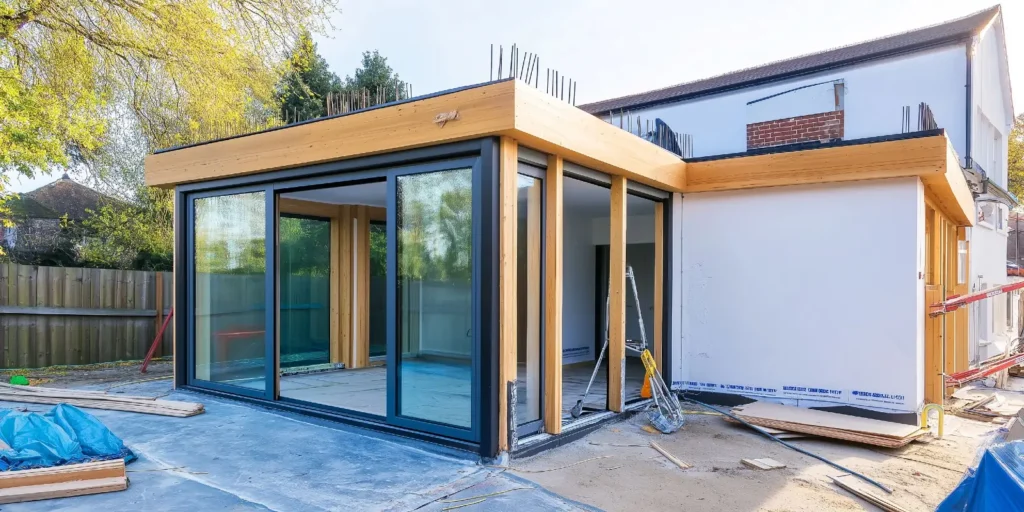Considering a house extension in Melbourne? It’s a great way to add space and value to your home without the stress of moving. However, the process involves planning, permits, budgeting, and hiring builders, which can feel overwhelming. This guide provides all the essential information to help you start your extension project smoothly.
Contents
1. Define Your Goals
Are you looking for more living space because your family is growing, or do you simply want a larger living area for comfort? Perhaps your home feels cramped, and you need better functionality—an expanded kitchen, an extra bathroom, or a dedicated workspace. Another common reason is increasing property value, as a well-planned extension can significantly boost your home’s market price.
2. Set a Realistic Budget
The size and complexity of the extension significantly affects the budget. Adding multiple rooms or making structural changes will increase costs. The materials you choose also play a role, with high-end finishes driving up the price.
Additionally, it’s always smart to keep a 10-15% buffer in your budget. This is intended for unexpected expenses, as surprises like hidden structural issues or permit delays can arise. A good tip is to speak with a few professional house extension builders Melbourne early on to get a rough estimate before finalizing your plans.
3. Understand Melbourne’s Planning Permits
Depending on your suburb and the scope of your extension, you may require planning permits, especially if your project affects neighbors—for example, if it exceeds height restrictions. Building permits are almost always necessary for structural changes, as they ensure the work meets safety standards.
If your home is in a heritage zone, additional heritage overlays may apply, meaning extra approvals will be needed. To avoid delays, check with your local council early in the process or consider hiring a town planner to help manage the paperwork.
4. Choose the Right Design
Designing your home layout for an extension can be tricky, as it requires balancing functionality, aesthetics, and structural feasibility. You’ll need to consider how the new space integrates with your existing floor plan while ensuring proper flow, natural light, and compliance with building codes.
Professionals can help. The choice between an architect and a draftsperson depends on the complexity of your project.
Architect (Best for Complex or Custom Designs)
An architect is ideal for two-storey extensions, curved roofs, heritage homes, or structural changes. They handle detailed technical drawings, engineering coordination, council approvals, and builder oversight. Their fees typically range from 10-15% of total project costs, which may be higher upfront but can prevent costly mistakes. For example, a double-storey rear extension with a cantilevered balcony requires precise structural calculations—an architect ensures safety and compliance.
Draftsperson (Best for Simple, Cost-Effective Designs)
A draftsperson is suitable for single-storey extensions, flat roofs, or straightforward additions. They are more affordable, with fees around 5-8% of project costs, but may lack innovation in space optimization. For instance, a basic ground-floor kitchen extension with a flat roof may only need technical drawings, not full architectural services.
Alternative Option: Prefabricated/Modular Extensions
There are companies offering pre-designed modular solutions, such as sunrooms, granny flats, or home offices. The advantages include faster approval, lower labor costs, and weather-resistant construction. However, the downside is limited customization, making them best suited for standard shapes and sizes.

6. Prepare for the Build
Undertaking a home extension can significantly disrupt your daily life, so proper preparation is essential to ensure a smoother construction process.
Temporary Living Arrangements
Short-term rentals, staying with family, or even booking an extended-stay hotel can provide a more comfortable living situation while construction is underway. This is especially important if utilities like water or electricity will be temporarily disconnected.
Protecting Your Belongings
Construction generates dust, debris, and vibrations that can damage furniture, electronics, and personal items. To safeguard your possessions, take proactive steps such as covering furniture with plastic sheets or moving items to a storage unit.
Sealing off unaffected areas with temporary barriers or dust curtains can help minimize dust spread. Additionally, store valuables and fragile items in a secure, dust-free space to prevent accidental damage. These precautions will help keep your belongings safe during construction.
Expect the Unexpected
Weather delays, especially for outdoor projects, can disrupt timelines, while material shortages or delivery setbacks may cause further complications. Additionally, hidden structural problems, such as outdated wiring, plumbing issues, or termite damage uncovered during demolition, can lead to unexpected repairs. Being prepared for these challenges will help you manage delays and adjust plans as needed.
7. Manage the Entire Process Efficiently
Turning your vision to life requires strong project management to ensure a smooth and successful house extension. Whether you’re adding an additional living space, updating classic house designs, or transforming a worker’s cottage, staying organized is key.
Hiring extension specialists or custom home design experts can streamline the process. They help with everything from the initial concept design to securing town planning approval, ensuring your project complies with local regulations.
To stay on track throughout your house extension project, regular check-ins with your builder are essential to ensure timelines are met and any issues are addressed promptly. It’s also wise to keep a contingency fund—typically 10–15% of your budget—to cover unexpected costs that may arise during construction.
Bottom Line
A house extension in Melbourne is a significant project that requires careful planning. With the right preparation, your dream extension is well within reach. Ready to take the next step? Working with trusted professionals ensures a smooth process.



